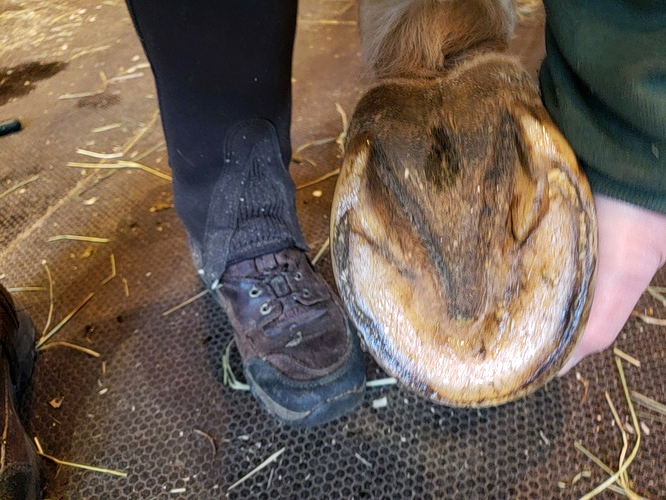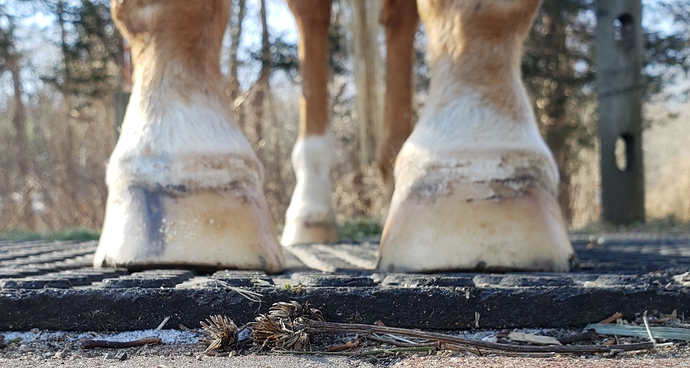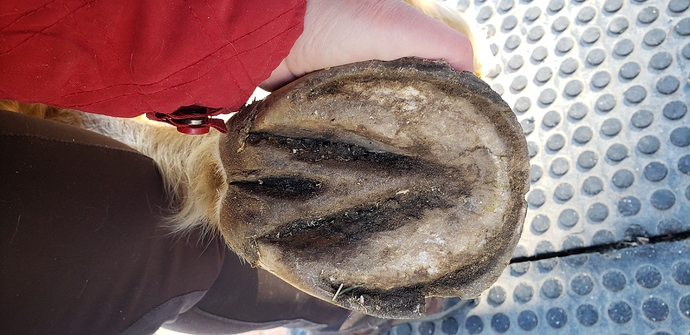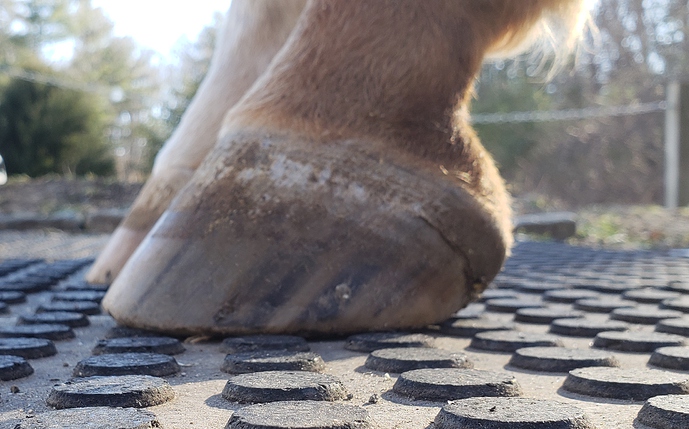My gelding is 27 now. Fortunately his feet have been pronounced “perfect” by the vet after a recent full set. All those years of good trimming and shoeing she said with the farrier standing beside her.
We have had the same farrier since I bought him 20 years ago. He came from Iowa with a pair of cheap keg shoes on the front. Toes were long, heels run down, and pastern angles require a 2-degree pad. It took some time finding the breakover. He was on steel Natural Balance and Natural Balance Light so his toes could be rolled.
A couple of years ago the farrier was at a clinic where the Avanti shoe was demonstrated. We tried it and it is amazing. He had little stumbly toe dragging things that disappeared with the first shoeing. It keeps the breakover where it belongs, no changes. It is the outside contour that has more lateral room so it is easier to pick the foot up. There is a very high ridge around the inside. It was fine as a winter shoe with borium studs. The farrier has switched other horses with similar results. She said the dressage crowd doesn’t care for it because it takes some of the flash out of their performance.
I have to give credit to the vet. Farrier wanted to consult with her before we changed his shoes. Hence the full set of x-rays. When I asked the vet if they could get together she asked for the farrier’s phone number. They set up the appointment. So much easier than trying to figure it out myself.

 hopefully your awesome vet can help get her comfortable!!
hopefully your awesome vet can help get her comfortable!!



